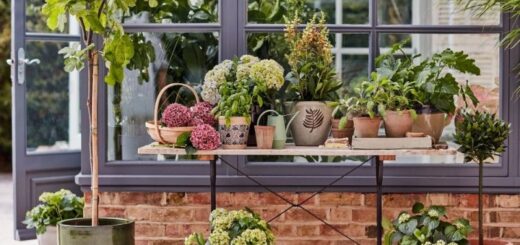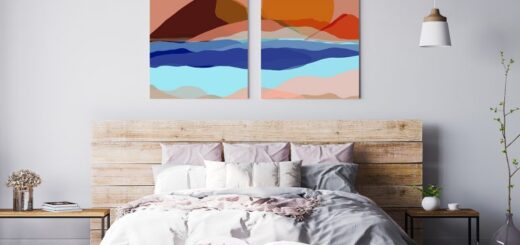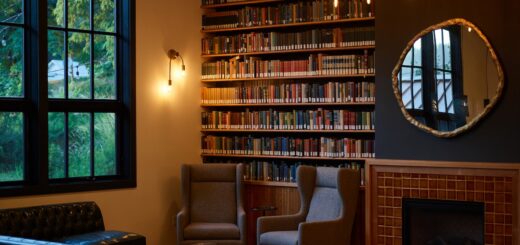6 Tips for Designing a Low-Maintenance Yard
Following the top garden trends is an excellent place to start regarding backyard design. However, the story cannot end there if you are designing a low-maintenance yard. A low-maintenance yard, ironically, requires a lot of thought and work upfront. Think of it as an investment. You are spending extra time to reduce the effort level needed later.
Creating a low-maintenance landscape lets you enjoy your property more and less time working on it. Even if you hire a professional maintenance crew for your yard, you can benefit financially from an easily maintained yard.
Here are 6 design tips that we have comprised to help get you started and inspired to create a low-upkeep landscape that you can love.
Tip 1 Choose proper alternatives to grass
Turf areas are some of the highest maintenance areas of a property. Therefore, the less turf there is on your property, the less maintenance your property needs. This can be achieved in a multitude of ways:
- Adding more plant beds,
- Extending mulch rings around trees,
- Extending patio areas,
- Adding more concrete in certain places (ex. concrete pathway to an outdoor living area).
However, many people simply can’t imagine their gardens and yards without at least a few green patches here and there. That’s where artificial grass comes into play. As long as you choose the right option for artificial turf types, your yard can be green and easy to maintain.
Choosing artificial turf has other advantages too. It’s great for areas where it is tough to grow grass, such as shaded spots or hills which may experience erosion. Additionally, it’s great for places that are difficult to mow.
Tip 2 Swap flowers for shrubs
Reducing the workload that comes with constant planting, staking, watering, and deadheading to have a two-week display of blooms probably sounds enticing, especially to those who have experienced the blight of seasonal flower beds when it comes to maintenance. You can reduce this maintenance by replacing some flower beds with easily kept shrubs. Just make sure you’re not radical with this. You do not want to get rid of flowers entirely. Consider only replacing some of them.
Choose perennials if you want color
Aside from easy-to-maintain green shrubs, for a pop of color, you can replace annual bedding plants that fade after a season with perennials. Flowers like English lavender and spurge bloom for months and only require an annual trim to keep from getting too woody.
Tip 3 Properly organize your tools
Not having a proper organizational plan for your garden tools can be a huge time waster. Looking for the shovel or a missing part of the lawn mower can sometimes take more effort than the garden job itself. And by the time you do find what you’re looking for, you’re already too tired for yard maintenance.
Try coming up with a storage system that works for you. This could be anything from separating an area of the garage for garden tools to simply installing pegs on the side of the house, under the eaves. The point is to designate a specific place for each tool. That way, they can be both found and put away easily.
The best you could do, of course, is a garden shed. Adding a properly sized shed can also solve many other storage problems you may have aside from garden tool storage. For example, if you are running a small business from home and are having trouble with your space, you can solve that problem with a shed too.
Tip 4 Create outdoor living areas
You can use your yard to extend your living space and options for entertaining in warm weather. Whether it’s with outdoor dining areas, lounges, or seating nooks around fire pits, this design element is sure to get you to spend more time in your yard. While this might sound a bit counterintuitive in regards to designing a low-maintenance yard, trust us, it helps in more than one way. Patios, decks, and terraces will cut down the amount of planting space and lawns to maintain. All these structures generally require less maintenance than garden beds.
Be wary of complex fixtures
Building an outdoor living area may tempt you to install a fireplace or water fixture. But, if your goal is designing a low-maintenance yard, you need to restrain yourself from getting complex features that require a lot of upkeep. Imagine having to do a detailed scrub of a statue once a week, with all the nooks and crannies where dirt and dust collect. A great example of a low-maintenance water fixture would be a simple birdbath in a minimalist design.
Tip 5 Choose plants that are well suited for your area
Making sure that you are putting the right plant for your area in your yard may take some extra effort upfront. However, it can result in a major time and money saver in the long run. You shouldn’t insist on growing citrus plants if your area is known for slow-draining soil. Nor should you try growing rhododendrons in a dry, windswept area.
Additionally, if you don’t think you’ll have the time regularly for pruning, it’s probably best to stay away from climbing roses, ficus, or wisteria. This is because they can easily get out of hand without proper maintenance. Always make sure that the plant you’re choosing naturally grows in your area or similar climate regions. This way, they won’t need as much care or time.
Tip 6 It’s okay to mix mulch and rock
There is no question that mulch is the best option for surrounding your plants and trees. It both adds nutrients to the soil and provides insulation. However, when you’re designing a low-maintenance yard, it may not always be the most desirable choice. That’s why yard stones and gravel are useful. You should try using a healthy mix of both in your backyard.
For instance, use stone around the pool area to prevent mulch from being tracked or blown into the water. They are great for surrounding any concrete in your yard to make a smoother transition from a manmade concrete slab to natural turf.
However, because rocks cannot help plants the way that mulch can, your property can also benefit from mulch from a maintenance perspective. Plants are going to perform better when mulched. Their roots retain more moisture and are better insulated against the intense effects of the wind and sun when the surrounding dirt is mulched.
Key Takeaways
Designing a low-maintenance yard can be a fun and extremely rewarding experience. It helps you spend more of your time relaxing in it than taking care of it. Of course, you should always keep your budget in mind. You should do what you can to save money on these renovations. And remember, you have time. If the budget doesn’t allow for something to be done or replaced today, you can always wait and do it right when it’s possible.





Recent Comments